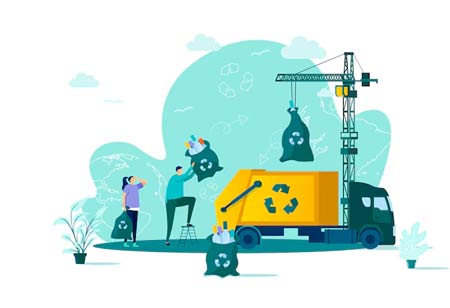Thank you for Subscribing to Construction Business Review Weekly Brief

Integrating Environmental Impact Assessment and Waste Management in Modern Construction
In an era when climate resilience and environmental accountability are no longer optional, the construction industry stands at a pivotal crossroads. As infrastructure demands grow, so too does the responsibility to build sustainably. Two critical pillars—environmental Impact Assessment (EIA) and Waste Management—are central to ensuring that development aligns with environmental stewardship.
The Role of Environmental Impact Assessment in Construction
Environmental Impact Assessments are not just regulatory checkboxes—they are strategic tools that help the construction industry anticipate, mitigate, and manage the environmental consequences of its projects. A robust EIA process evaluates a projects potential effects on air, water, soil, biodiversity, and other environmental topic areas as well as local communities. It also ensures compliance with legal frameworks and fosters transparency with stakeholders.
At Clancy, we embed EIA principles from the earliest stages of project planning. Our Operations Environmental Aspect and Impact Assessment and Project Environmental Management Plans provide structured methodologies for identifying environmental risks and opportunities.
These assessments are living documents, updated regularly to reflect scope, regulation, and best practice changes. We also integrate stakeholder consultation into our EIA approach, engaging with regulatory bodies to apply the mitigation hierarchy effectively. This ensures that our projects comply with legislation and contribute positively to the environment and the communities in which we work.
Waste Management: From Compliance to Circularity
Construction and demolition waste account for a significant portion of global landfills. Effective waste management is, therefore, essential—not only for compliance but also for advancing circular economy principles.
Construction and demolition waste account for a significant portion of global landfills. Effective waste management is, therefore, essential—not only for compliance but also for advancing circular economy principles
Our internal audits assess legal compliance, waste classification, and data management across our sites. Aligned with ISO standards, they help us identify areas for improvement and celebrate best practices.
We’ve also implemented site-specific plans that outline depot-level responsibilities, waste hierarchy protocols, and sustainability targets. These plans are supported by training initiatives such as our in-house E&S Green Card training programme, ensuring that environmental awareness and understanding are embedded across all levels of the organisation.
Looking Ahead
As highlighted in a recent article by Construction Business Review, Environmental Impact Assessments and waste management are increasingly shaped by evolving regulations and incentives. With the introduction of Biodiversity Net Gain legislation and growing pressure to decarbonise, the construction sector must remain agile and proactive.
Environmental Impact Assessment and Waste Management are not isolated processes—they are interdependent components of a sustainable construction strategy.
We can build infrastructure that serves both people and the planet by embedding these practices into our culture, systems, and supply chains.








